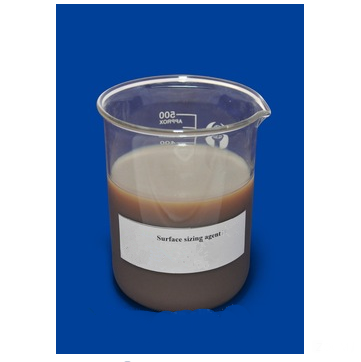Human Calcium C (Calgranulin C) ELISA Kit
 ( for serum, plasma, cell culture supernatants and biological fluids )
principle
This experiment used double antibody sandwich ABC-ELISA. Coated with anti-human Calgranulin C monoclonal antibody on the plate, standard and sample Calgranulin C combined with monoclonal antibody, biotinylated anti-human Calgranulin C was added to form an immune complex attached to the plate, horseradish The oxide-labeled Streptavidin is combined with biotin, and the substrate working solution is blue. Finally, the stop solution sulfuric acid is added, and the OD value is measured at 450 nm. The Calgranulin C concentration is directly proportional to the OD value, and the specimen can be obtained by drawing a standard curve. Calgranulin C concentration.
Kit composition ( 2-8 ° C preservation)
Coated Wells | 96 holes | Enzyme Conjugate | 12ml |
10× specimen dilution (Sample Buffer) | 12ml | 20×Wash Buffer | 50ml |
Standards: 20ng/bottle | 2 bottles | Substrate working fluid (TMB Solution) | 12ml |
Primary antibody working solution (Biotinylated Antibody) | 12ml | Stop Solution | 12ml |
Prepare reagents and collect blood samples
1. Collection of specimens: serum, plasma (EDTA, citrate, heparin anticoagulation), cell culture supernatant, tissue homogenate, etc., as early as possible, stored at 2-8 ° C for 48 hours; longer time must be frozen (-20 ° C Or -70 °C) to avoid repeated freezing and thawing. Serum, plasma, as 1:10 dilution (2OuI taken, added 180ul sample dilutions, diluted 10 times). The cell culture supernatant can be directly detected without dilution.
2. Standard solution preparation: Add 1 ml of distilled water before use and mix well to prepare a 20 ng/ml solution. Set the standard tube 8 tube, the first tube plus the standard dilution 900ul, the second to the eighth tube to add the sample dilution 500ul. Add 100 ul of 20 ng/ml standard solution to the first tube, mix and aspirate 500 ul with the sampler, and transfer to the second tube. Repeat the dilution as described above, and remove 500 ul from the seventh tube and discard it. The eighth tube is a blank control.
3. The 10× specimen dilution was diluted 1:10 with distilled water (example: 1 ml concentrated dilution + 9 ml distilled water).
4. Washing solution: diluted 1:20 with distilled water (example: 1 ml concentrated washing solution added to 19 ml of distilled water)
Test procedure
1. Loading: Add 100 ul of standard or sample to be tested in each well. Mix the reaction plate thoroughly and let it stand at 37 °C for 120 minutes.
2. Wash the plate: Wash the plate thoroughly with washing solution 4-6 times, and dry it on the filter paper.
3. Add 100 ul of the first antibody working solution to each well. The reaction plate was thoroughly mixed and placed at 37 ° C for 60 minutes.
4. Wash the board: the same as before.
5. Add 100 ul of enzyme-labeled antibody working solution per well. The reaction plate was placed at 37 ° C for 30 minutes.
6. Wash the board: same as before.
7. Add 100 ul of substrate working solution to each well and let it react at 37 ° C for 15 minutes in the dark.
8. Add 100 ul of stop solution to each well and mix.
9. Measure the absorbance at 450 nm using a microplate reader within 30 minutes.
Result calculation and judgment
1. All OD values ​​should be subtracted from the blank value before calculation.
2. Take the standard products 2000, 1000, 500, 250, 125, 62.5, 31.2, 0 pg/ml as the abscissa and OD as the ordinate. Draw on the coordinate paper and draw the standard curve.
3. According to the OD value of the sample, find the corresponding Calgranulin C content on the graph, and then multiply the dilution factor.
Kit performance
1. Sensitivity: The minimum concentration of Calgranulin C is less than 15pg/ml.
2. Specificity: Recombinant or natural human Calgranulin C can be detected simultaneously. Does not cross-react with other human cytokines.
3. Repeatability: The coefficient of variation in the plate and plate is less than 10.2%.
Precautions
1. It is recommended to make double holes for the above standard holes and samples to be tested. The standard curve should be made at the same time for each measurement.
2. The washing process is critical. Insufficient washing will result in an accuracy error and an erroneous rise in the OD value.
3. After the slats are opened, the remaining slats should be sealed again to keep the slats dry .
4. This kit should be stored in a 4oC refrigerator.
5. This kit is for scientific research only and cannot be used for clinical diagnosis!
Styrene Acrylic Copolymer
2. Specifications:
|
Item
|
Index
|
|
Appearance
|
Brown beige liquid
|
|
Solid content
|
30%±2
|
|
Viscosity
|
≤30
|
|
pH
|
3-5
|
|
Density
|
1.02-1.1g/cm³
|
|
Ionic
|
cationic
|
|
Flash Point
|
> 200℃Auto Ignition Temp
|
4. Use Method:
The product is weak cationic, it can be used with cation and nonionic additive, such as cationic starch,basic dye and polyvinyl alcohol etc, but cannot be mix used with additive of strong cation.
The consumption of the product depends on the quality of base paper, internal sizing and size resistance. It is usually 0.5-2.5% of oven dry weight.
5. Package and storage:
200KG or 1000KG plastic drums.
The storage period is 6 months below the temperature 5-35℃,keep away from sunlight and frost.

Styrene Acrylic Copolymer,Cationic Styrene Acrylic Copolymer,Anionic Styrene Acrylic Copolymer,Sizing Agent For Corrugated Paper
Shandong Tiancheng Chemical Co., Ltd. , https://www.tianchengchemical.com
